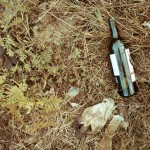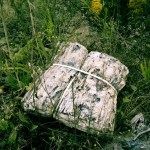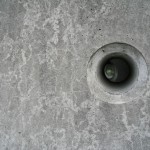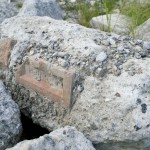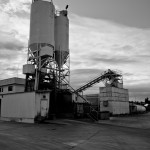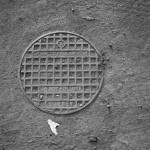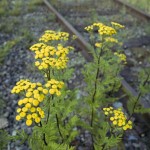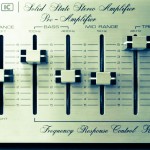Aug
3
2011
While I had access to the Sigma Dp1s I set up a quick comparison with my current digital cameras. The Nikon P7000 and the Pentax K-7. The image bellow is 100% crops from the same area. You can see that the DP1s produces a very clean detailed file but there is just no getting around the fact that it is much lower resolution. As for the K-7 image I shot the DA12-24 at 16mm to make it roughly equivalent in focal length. I do have better performing lenses but I thought I would make it as fair as possible.

Here I’ve upscaled the DP1s file to the same size as the K-7 image using photoshop to make a more directcomparison. So in my estimation the image resolution sits somewhere between the point and shoot P7000 and the DSLR K-7. The fixed 28mm equivelent F4.0 lens really is quite limiting but if that is what you want in a point and shoot this camera will work.

I’ve read that the Dp1s makes a good landscape camera,

but I find it hard to see, unless your printing at a relatively small size. The images that I did have printed seem to suggest a maximum printing size of around 11×14. In the end I’m not so interested in whether Foveon is a better technology than Bayer filter sensors. It is a camera that does one thing at one focal length, and that’s OK, but the market has moved on with camera’s like the Fuji x100 while Sigma has made minor updates to the same products. As the DP series of cameras exists today it’s hard to make a valid case for purchasing one paritcularly with their high asking price.
2 comments | tags: Digital, Dp1s, Photography, Sigma | posted in Cameras, Photography
Jul
31
2011
A friend offered to lend me his Sigma Dp1s so that I might sip from the sweet Foveon Kool Aid. OK those weren’t his words or likely his intent, thanks Duncan. Let me be clear though this camera has some major shortcomings that can’t be ignored. It’s slow, the sort of slow where I could load a roll of film faster than it can write a file to a card. The rear LCD appears to exist to show your settings and to confirm that yes you did capture something. The metering also did some serious highlight clipping even when I had -1 exposure compensation, of course I had no way of knowing this until I got the files into my computer (see previous sentence). For all other complaints please refer to the rest of the Internet. Now for the positive side and where the argument for the purpose of this camera begins. It produces nice sharp noise free files with accurate colours. It has a 16mm f4.0 lens on an APSC sized sensor which is unique and while on the slow side it performs very well. The close focus distance is quite long at 30cm so that does limit some of the creative possibilities. I guess for me the unanswered question now is how large an image can be rendered from these files. As is well documented the sensor captures 3 colours at different layers but the file dimensions are 2640×1760 however you slice it. Aside from the issues of speed I actually like the simplicity of the camera and it’s compactness. I was able to configure the otherwise useless (wide/tele) buttons to control ISO, why does a camera with a fixed focal length have these controls? This arrangement ends up in practice being the best of any camera I have ever used, wide decreases ISO, tele increases ISO, simple and immediate making ISO the third variable much like my DSLR. I easily moved between ISO 50 to 400 and even found ISO 800 to be largely noise free. So while I will reserve any final verdict until I have seen an image printed, it appears that the only thing standing in this cameras way from being a good photographic tool is it’s glacial speed, and exposure system. Whether these issues are adequately addressed with the latest version the Dp1x I can’t say but any improvement in speed would be welcome.
10 comments | tags: Cameras, Digital, Dp1s, Sigma | posted in Cameras, Photography
Jun
1
2011


Taken with the Sony DSC-V3, the top image was shot at f4.0 again showing that you can get interesting bokeh under the right conditions with a small sensor.
2 comments | tags: Digital, DSC-V3, Sony | posted in Photography, Processing
May
26
2011
I took both these pictures this week with my Sony digital camera and as I was importing them into Lightroom it just struck me how different they were, that’s the great thing about digital cameras. I think that it’s easy to forget how much creative power we have through technology. This trend will continue as new features are added to cameras and I for one look forward to it. On a side note anyone who has seen enough of my images will realize I often take pictures of whatever catches my eye whether it something people consider a traditional subject for photography or not.


2 comments | tags: Digital, Sony | posted in Photography, Processing
Mar
8
2011
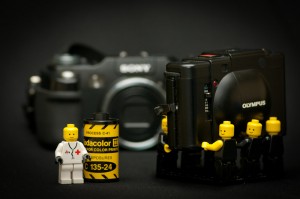
"Wait it's not dead!"
My “advanced compact” camera is getting on in this digital age (six years old) and I’ve been looking at what I will replace it with. Features wise it stands up well against current cameras but the sensor is noisy and the processing is slow. So while comparing the features of the current cameras I started to think about what the equivalent costs would be if I just used film and some of my older cameras. So lets say I choose Kodak Ektar at $7.50 per 36 exposures and pay $3.50 for developing (I do my own scanning) that’s $11.00/36 = 0.30 per image. So if I were to shoot 15 images a week for 52 weeks that’s 780 images times $0.30 is…… drum-roll…… $240 per year. With the current cameras I’ve been looking at costing twice that much I think that it’s actually economical in the short term to continue and even increase my film use. The bonus for me is of course the pleasure I get from using the older cameras.
Of course when I want to do something where getting the image is critical I will still use my DSLR which is gratifying as well.
4 comments | tags: Cameras, Digital, film, Photography | posted in Cameras, Photography, Processing




